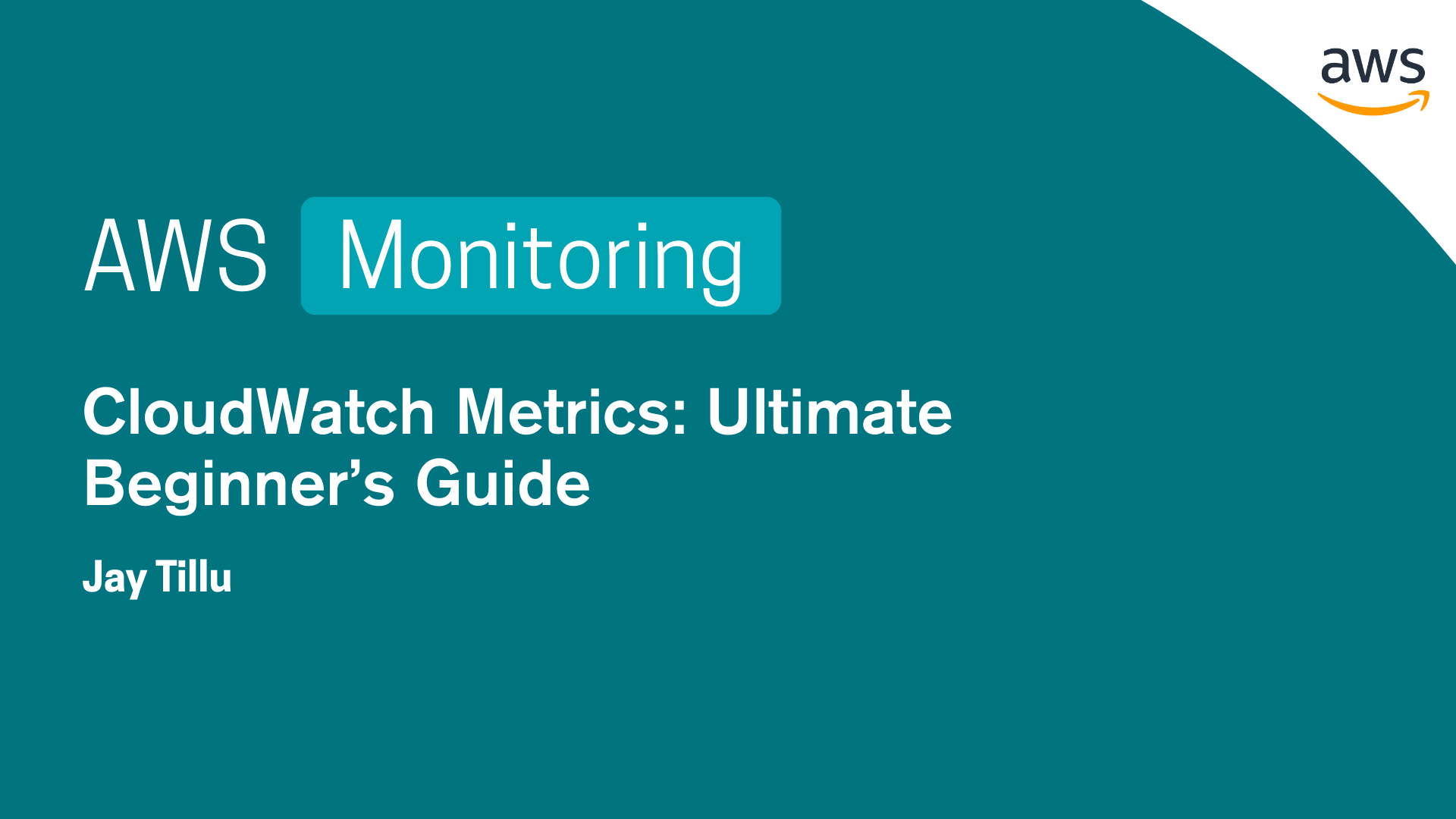Table of Contents
CloudWatch Metrics is AWS’s built-in monitoring system that helps track the health and performance of your cloud resources. Arjun discovered the power of CloudWatch Metrics one evening when his phone buzzed during dinner.
“Dude, I think our backend is down again,” said Ravi.
Not again. Hundreds of users were booking rides on RideGo every hour, and Arjun couldn’t afford downtime. He needed a system that watched everything — even when he didn’t. That’s when he turned to CloudWatch Metrics.
🧠 What is CloudWatch Metrics?
In simple terms, CloudWatch Metrics helps you keep an eye on what’s happening inside your AWS environment—like a smart CCTV system for your cloud.
Each metric is a number representing the health or performance of a resource.
🛠️ For example:
- EC2 ➜
CPUUtilization,NetworkIn,DiskReadBytes - S3 ➜
BucketSizeBytes,NumberOfObjects - Lambda ➜
Invocations,Duration,Errors
Every AWS service automatically sends metrics to CloudWatch in its own namespace. Think of a namespace like a folder labeled with the service’s name.
📦 Key Concepts in CloudWatch Metrics
| Term | Meaning |
| Metric | A value you want to track (like CPU usage) |
| Namespace | Category that organizes metrics by service (e.g., AWS/EC2) |
| Dimension | Extra info about the metric (e.g., Instance ID, Region) |
| Timestamp | The exact time when the metric was recorded |
| Custom Metric | A metric you create yourself (e.g., memory usage, app-specific counters) |
🧪 Real-Life Example: RideGo’s EC2 Monitoring
Arjun had EC2 instances for his app and wanted to monitor their CPU. Here’s what he did:
- Opened CloudWatch > Metrics
- Selected
AWS/EC2namespace - Filtered by
InstanceId - Tracked
CPUUtilizationover 1 month
He quickly spotted CPU spikes every Friday night.
Why? That’s when discounts went live. Now he knew when to scale up!
🔍 But Wait… What if I Want Memory Usage?
AWS doesn’t provide memory metrics by default. Arjun wanted to track it too, so he:
- Installed the CloudWatch Agent
- Pushed Custom Metrics from EC2 to CloudWatch
Now he could see CPU, memory, and even custom app metrics—like failed logins or ride completions.
⚡ Real-Time Data Flow: How the Magic Happens
Arjun asked, “Can I send these metrics somewhere else too?”
Absolutely.
CloudWatch Metrics can be streamed in near real-time to:
- Amazon Kinesis Data Firehose
- Third-party tools like Datadog, Splunk, New Relic
He even used OpenSearch to create visual dashboards for his team. No more staring at spreadsheets!
🖥️ Dashboard: Single Pane of Glass
With CloudWatch Dashboards, Arjun:
- Added key metrics like CPU, memory, errors
- Shared a live dashboard with his team
- Got visual alerts in red when something was wrong
🛠️ Quick Tips from Arjun
✅ Enable Detailed Monitoring for EC2 to get data every 1 minute
✅ Use Custom Metrics for app-level insights
✅ Filter metrics by dimensions to avoid clutter
✅ Set up dashboards and alarms for your ops team
✅ Use Kinesis if you want to move metrics to other tools
🎯 Final Thoughts
Arjun doesn’t panic anymore when Ravi says, “I think it’s down.”
He just checks the dashboard—or better, waits for the alert CloudWatch sends to his phone. CloudWatch became his 24/7 ops buddy.
If you’re preparing for the AWS Solutions Architect Associate (SAA) exam, mastering CloudWatch is a must. It’s not just for monitoring—it’s for peace of mind.
FAQ
❓ What are AWS CloudWatch Metrics?
AWS CloudWatch Metrics are performance indicators (like CPU or request count) collected from AWS resources for monitoring and alerting.
❓ Can I create custom CloudWatch Metrics?
Yes, you can push custom CloudWatch Metrics such as memory usage or app-specific counters using the CloudWatch Agent.
❓ Can I create custom CloudWatch Metrics?
By default, every 5 minutes for EC2. With detailed monitoring enabled, metrics are collected every 1 minute.
Read More on AWS Monitoring
- Amazon CloudWatch Logs Insights: A Beginner’s Guide
- Difference between AWS CloudWatch, CloudTrail and Config
- Understanding AWS EventBridge: The Automation Service Explained
- Understanding AWS CloudWatch Alarms: Listen to Your Cloud Signals
- How CloudWatch Agent Completes EC2 Monitoring: A Comprehensive Guide
- Understanding Live Tail in Amazon CloudWatch Logs
- Master AWS Resource Monitoring with CloudWatch Metrics
- An Introduction to CloudWatch Logs: What You Need to Know
- Understanding Amazon CloudWatch: A Comprehensive Guide
